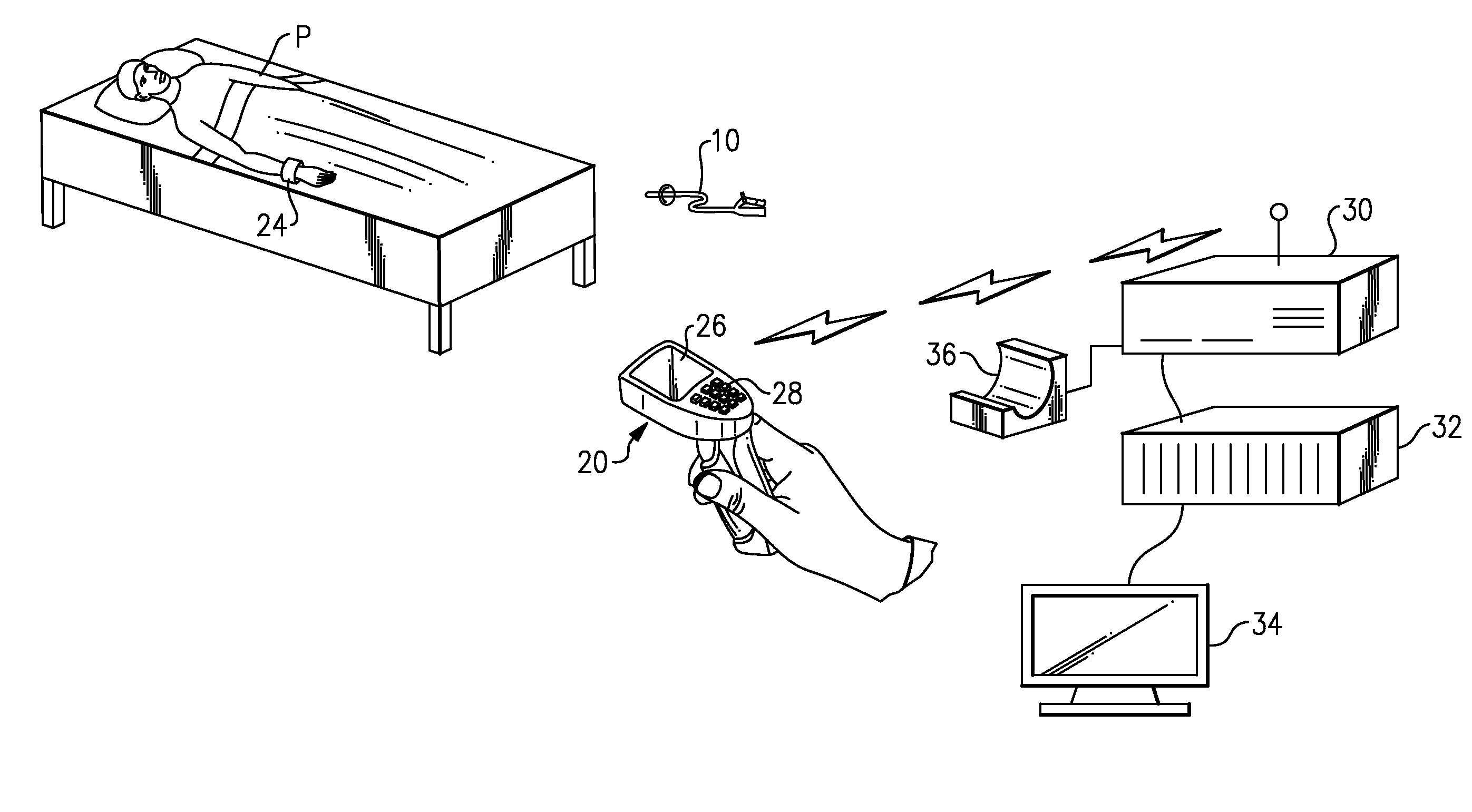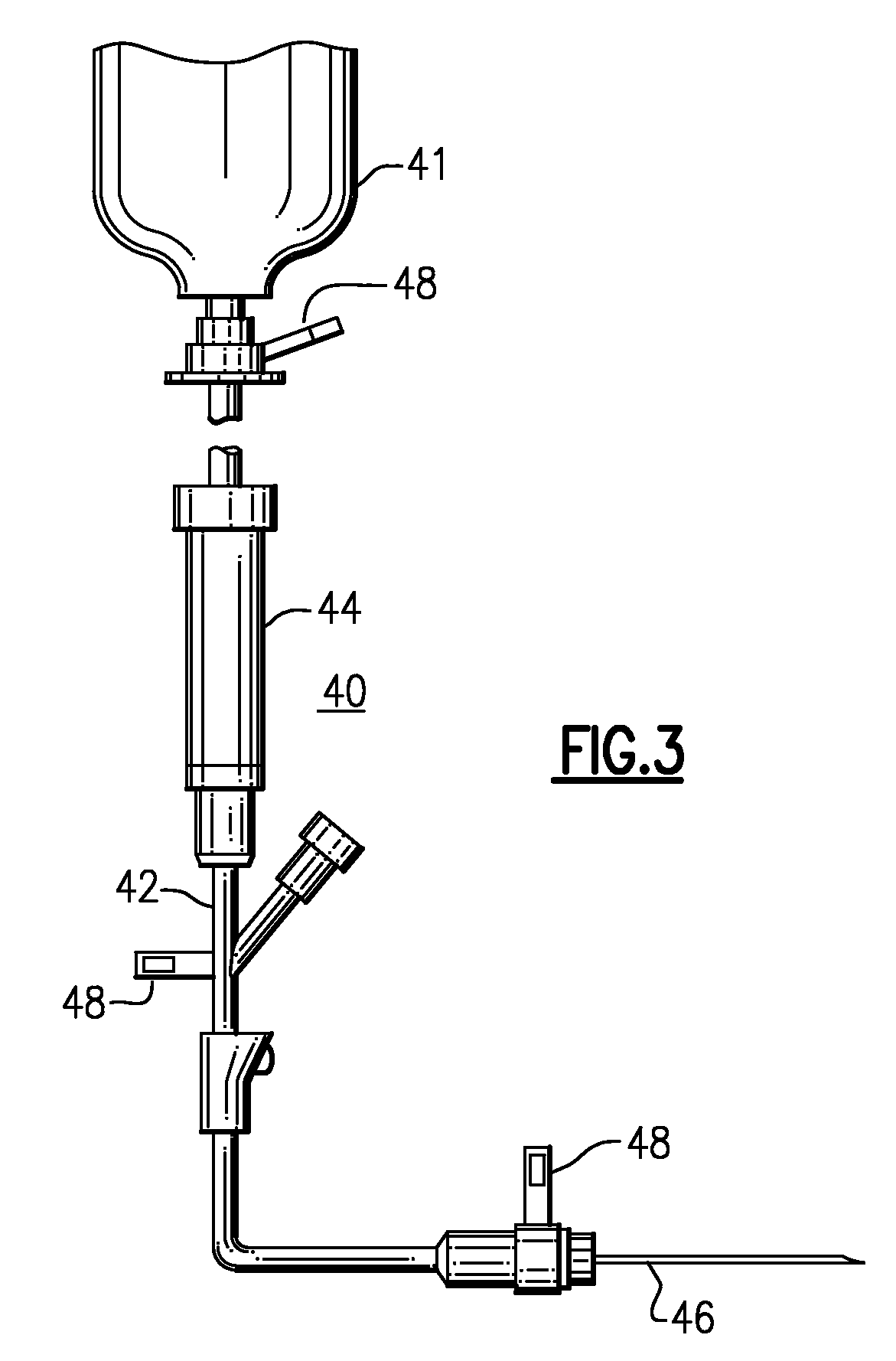CUI-Tagged Catheter Devices and System
- Summary
- Abstract
- Description
- Claims
- Application Information
AI Technical Summary
Benefits of technology
Problems solved by technology
Method used
Image
Examples
Embodiment Construction
[0028]Referring now to the Drawing, FIG. 1 illustrates the general arrangement of the equipment employed in this invention. A hospital patient P may be provided with a catheter 10, shown in more detail in FIG. 2, which is inserted into the patient P to assist in the drainage and collection of urine. The catheter remains in place for some period of time, and is considered an indwelling catheter. Also shown in FIG. 1 is a hand-held scanning appliance 20 capable of scanning and reading radio-frequency codes from RFID devices, as well as an application server 30. Here the RFID scanning appliance 20 and the server 30 are shown as communicating via a radio link, but the two devices may communicate via other means, such as a docking station 36 for the appliance 20.
[0029]As shown in FIG. 2 the catheter 10 is formed of an elongated flexible hollow tube 12 that is to be inserted via the patient's urethra into the bladder. There is drainage port 14 at the external terminus, and this is designe...
PUM
 Login to View More
Login to View More Abstract
Description
Claims
Application Information
 Login to View More
Login to View More - R&D
- Intellectual Property
- Life Sciences
- Materials
- Tech Scout
- Unparalleled Data Quality
- Higher Quality Content
- 60% Fewer Hallucinations
Browse by: Latest US Patents, China's latest patents, Technical Efficacy Thesaurus, Application Domain, Technology Topic, Popular Technical Reports.
© 2025 PatSnap. All rights reserved.Legal|Privacy policy|Modern Slavery Act Transparency Statement|Sitemap|About US| Contact US: help@patsnap.com



